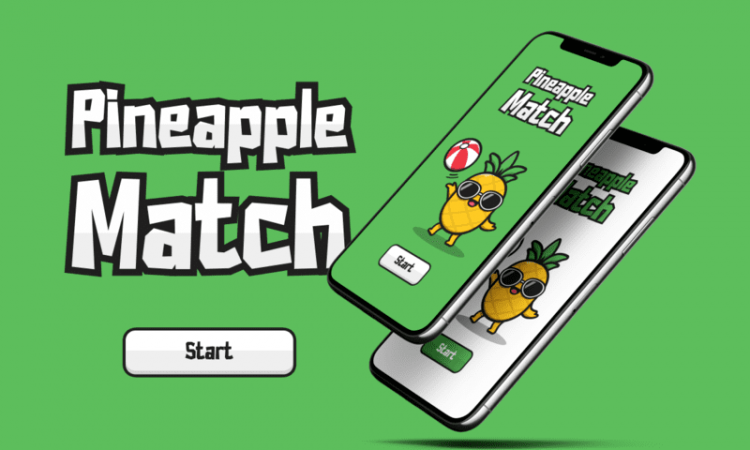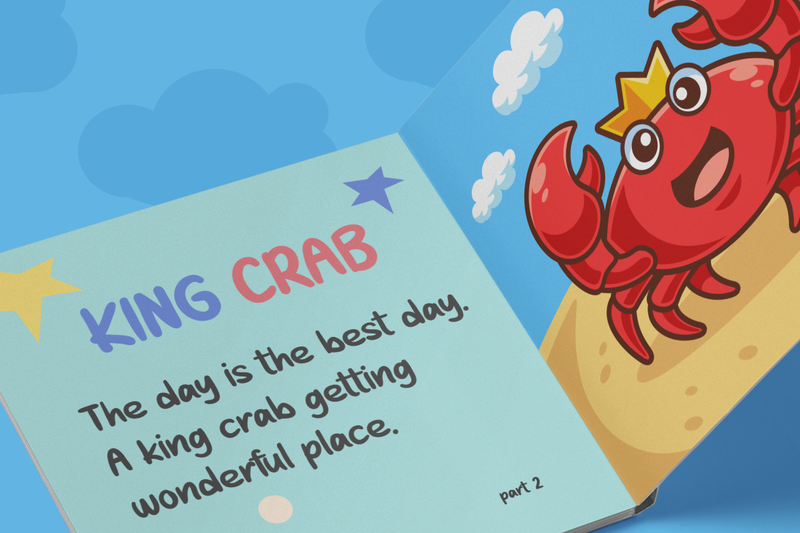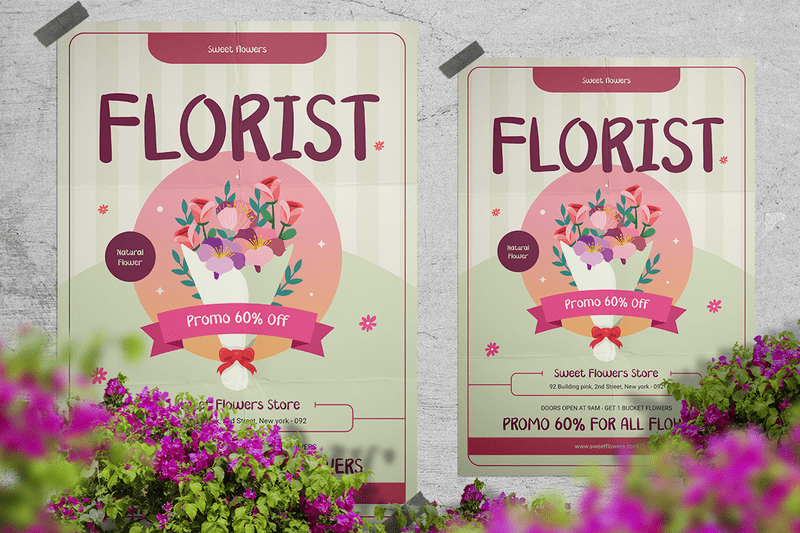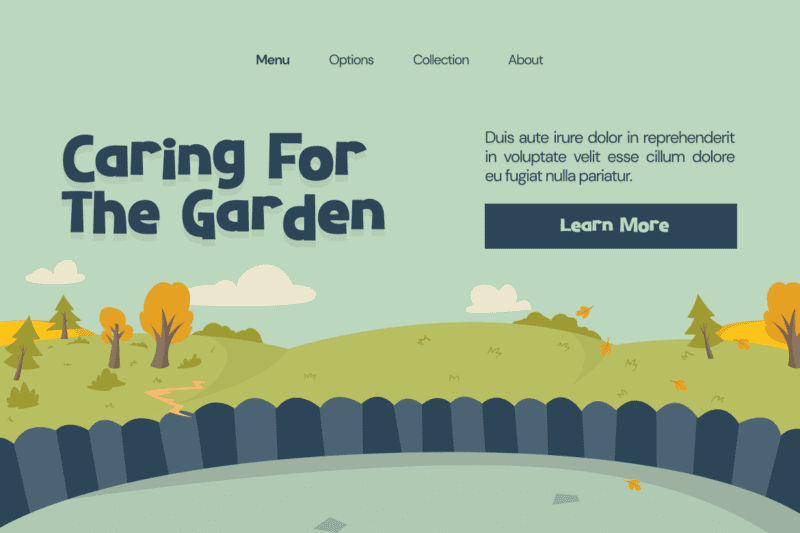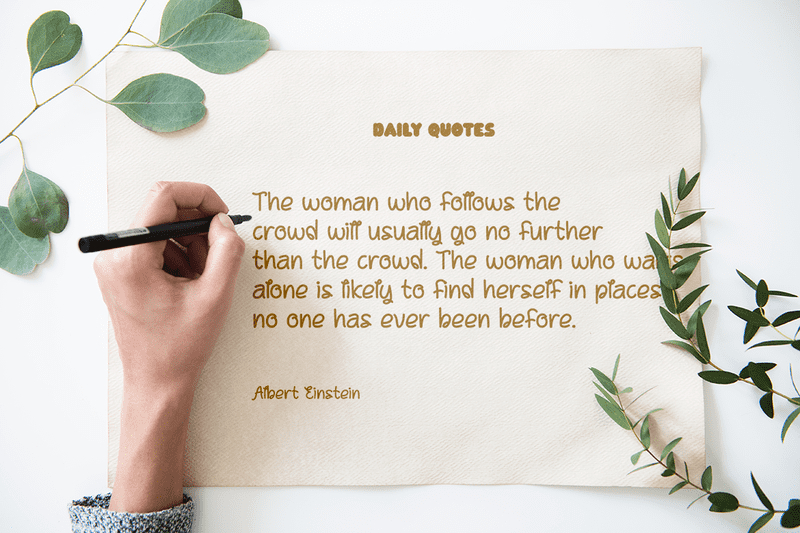I. Introduction
Font trends are fonts that are used frequently these days. This year, designers are getting more innovative in choosing fonts. Designers should also choose fonts that are connected to a certain design.
Choosing suitable fonts from the current font trends is much more than just choosing visually appealing ones. A good choice of fonts will give a graphic balance to the website, provide a visual aesthetic, and define the overall tone of the products.
Typography should direct and inform the users, improve readability and accessibility, and ensure a positive user experience.
Your typeface should correctly reflect the essence of your brand and successfully express your desired message. Failing to connect your typography with these crucial aspects can have a long-term negative impact on brand recognition and customer loyalty over time.
People grow comfortable with particular font trends connected with your business across numerous mediums, such as email signatures and online surfing. Therefore consistency is essential.
Let’s look at some key factors to consider when choosing a typeface for your business to assist you in choosing the options::
- Expressing Brand Personality:
Typefaces are an effective way of communication, conveying meaning, tone, and emotions. They allow you to express the unique personality of your brand in ways that words alone can not.
Understanding how various typefaces communicate helps you to generate interesting, on-brand content that your audience will like.
- Legibility and Readability:
Legibility refers to how quickly readers can distinguish characters in a specific font, while readability refers to how easily they can grasp the text. Font size, weight, style, and space between letters and words all have significant effects on legibility and reading. Making your text legible improves user experience and accessibility.
- Accessibility:
When selecting a typeface, keep accessibility in mind. Fonts should be readable on digital devices as well as on paper. Choose typefaces that do not strain readers’ eyes or interfere with understanding.
Make sure the typeface you choose supports several mediums and is legible by individuals with varying visual skills. Consider the requirements of people with dyslexia and prioritize readability at all sizes.
- Context and Medium:
The context of your project and the media in which your typeface will be used are important factors. If you are creating a logo, it should reflect the personality of your company and be easily recognized on a worldwide scale. Serif fonts are more readable at larger sizes, while sans-serif fonts are better suited for digital mediums.
- Consistency and Cohesion:
For effective brand communication, consistency and coherence are essential. The use of a consistent visual identity across all media, including fonts, colors, and pictures, helps to generate brand reputation and equity.
Customers know and trust your brand when it is consistent. Cohesion guarantees that your message is easily understood and that your brand is remembered.
- Trends and Timelessness:
While current font trends might give your design a modern touch, do not rely only on trends. Choose typefaces that transcend current fads to attain timelessness.
Fonts having a track record of long-term popularity are a safe bet for long-term appeal. Your design will remain current and relevant if you strike the correct mix between trends and timeless.
- Cultural and Regional Considerations:
Font perception can be influenced by cultural variations. In one culture, a font can be said to be a font trend that seems trendy and attractive but may appear outdated or even ridiculous. Respect your target audience’s cultural background and use fonts that fit their tastes.
In addition, be aware of regional differences in font usage to ensure that your design is well-received by locals.
- Functionality:
Choosing a font that is easy to read, comprehend, and utilize is critical. Make legibility, readability, and accessibility a priority. Choose font trends that work best for your content’s purpose and media.
Use serif fonts for posters and sans-serif fonts for webpages, for example. Consistency and functionality work together to produce a unified and user-friendly experience.
- Pairing Fonts:
Proper font pairing is critical for attaining aesthetic harmony and readability. Throughout your design, use either serif or sans-serif fonts consistently.
Combining diverse styles may have an unsettling impact. When combining fonts, consider font weight, style, and character set. To guarantee a smooth and professional image, aim for a coherent combination of complementing traits.
You may choose a font that successfully reflects your brand, communicates your message, and enhances your entire design by taking these variables into account and making smart decisions.
II. Understanding Font Trends
The world of graphic design marks the arrival of 2023 font trends, which will be the beginning of an exciting chapter. This year’s narrative takes the form of a nostalgic flashback, as many upcoming font trends reveal traces of the past.
While nostalgia is still a common element, its expression varies widely across these trends. Some fonts are designed to evoke familiar comforts, while others suggest a dark and futuristic vibe, and some seek to revive a sense of bygone beauty.
This may be related to our increased online presence in the aftermath of the pandemic, where design inspiration is no longer limited to specific time periods as digital archives cover all eras.
This year’s themes may also be impacted by fears around events like the war between Russia and Ukraine and inflation, where people seek refuge in nostalgic motifs. Whatever the reason, 2023 promises to be a dynamic year for font trends and typeface design.
Typography trends in 2023 reflect an increase in eccentricity and diversity, mirroring the diverse environment of movies, streaming platforms, social media, and commercial branding. Conformity has gone out of favor, allowing designers the freedom to explore and experiment with different fonts and typographic styles.
As popular culture welcomes more variety, inclusivity, and eclecticism, so does typography. Expect to see a wider range of fonts employed in TV shows and movies, as well as a more assertive and unique approach to typography in branding, print media, and online platforms.
With the digital economy becoming increasingly saturated, carefully considered typography can make a significant impact by carving out a distinct niche and attracting the attention of distracted customers.
III. Factors to Consider When Choosing a Typeface
Choosing a typeface for your design project can be quite challenging. Some designers tend to stick to their comfort zone and use the same few typefaces for each project, while others spend countless hours searching for the perfect typeface without ever feeling truly completely sure in their decision.
Selecting the correct font is important. A good typeface can improve your design, while a bad one can easily ruin it.
There are several factors that designers should keep in mind to make the process of picking a typeface easier and more focused, including contemporary typography trends and popular font trends.
- Purpose and Context of the Project
You can not just choose from the current font trends, but you should also consider thinking about the scope and context of your project.
Will the typeface be used for a specific purpose, such as a slide deck, or will it be utilized across the entire visual identity of a brand? Understanding the purpose will aid in determining the typeface’s needed flexibility.
Designers should also evaluate whether the font will be used only for digital projects or also in print. Additionally, it is important to consider whether the typeface will be used temporarily or permanently. Making a list of potential projects for which the font will be used can be helpful in the decision-making process.
- Brand Identity and Target Audience
Every brand has a distinct mood and message, and all visual aspects, including typefaces, must fit with and support the intended impression the brand seeks to convey to the public.
Begin by making a list of keywords that reflect the brand in order to filter down typeface options based on brand fit. These keywords can then be used to search for font trends that represent those characteristics or synonyms that convey the desired brand image.
For example, if a brand wants to project a formal and classic image, typefaces like Garamond or Caslon are appropriate alternatives. On the other hand, for a modern and cutting-edge brand, designers might choose modern font trends such as Roboto or Raleway.
- Readability and Legibility in Different Mediums
A typeface’s readability is unquestionably its most important feature. After all, the aim of type is to effectively communicate a message, and if the message is difficult to read, the typeface has failed in its purpose.
While readability and legibility are linked, they are not the same. Legibility refers to the ease with which individual letterforms within a typeface can be differentiated, while readability considers how readily distinct words can be distinguished and read.
The font size has a significant effect on both reading and legibility. When lowered to 10 pixels, a typeface that seems clear and attractive at 18 pixels may become incomprehensible. Although this may not be a problem if the font will only be used at larger sizes, it is crucial to consider whether it needs to be readable at smaller sizes.
By considering these factors, designers can navigate the various font trends with more confidence, ensuring that their choices match the project’s purpose, improves readability, and supports the brand identity they want to portray.
IV. Exploring Different Font Styles
These days, there are various font style trends that are available for you to choose from, ranging from modern font trends to more traditional styles. Here are the examples:
Serif fonts
The term “serif” is commonly associated with the mark or line that appears at the end of a character’s stroke, as well as with fonts that have serifs in their design. Serif fonts are sometimes referred to simply as “serifs,” despite the fact that this term specifically describes a font style characterized by the use of serifs in its letterforms.
Serif typography is divided into several sub-genres. Serif types that are well-known include EB Garamond, Merriweather, Noto Serif, Source Serif Pro, and Alegreya.
Sans-serif fonts
A sans serif font, as the name suggests, lacks the decorative ornament known as serifs. In typographic terminology, serifs are little strokes or extensions seen at the ends of long strokes, such as those seen in letters like “K” or “R.”
Various styles arise within sans serif typefaces, such as the sleek geometricity of Futura, the humanistic grace of Frutiger, the bold and aggressive character of Franklin Gothic, and the modern but refined appeal of Helvetica.
Sans serif fonts are among the popular font trends of brands, primarily due to their ability to give a clean and uncluttered appearance on digital devices, offering improved legibility when compared to their serif rivals.
Script fonts
Script fonts are carefully designed to have the charm and aesthetic flare of classic handwriting and calligraphy. These fonts are designed to look like the smooth strokes created by a pen, brush, or marker, resulting in a visually appealing presentation.
Script typefaces, which are typically used for decoration rather than practical text fonts, serve as eye-catching components. They are widely used as popular font trends in stationery, logotypes, branding, and poster design, and they provide adaptability when combined with other font styles to express different moods and aesthetics.
Liesel, Amarone, and Bayamo are examples of notable script typefaces.
Display fonts
Display fonts are a wide group of typefaces designed primarily for short-form and visually striking applications. They serve a variety of functions, including billboards, posters, logotypes, magazine or website headers, and book covers.
Display typefaces can be classed into serif, slab serif, didone, script, sans serif, and other types. Some types, such as the famous Walbaum, are particularly developed for exhibition reasons, with a plethora of ornamental embellishments.
Additionally, certain fonts like Helvetica Now offer a specialized display version that enhances or highlights the original design, specifically for larger sizes.
V. Matching Typeface with Project Objectives
It is important to create visual harmony with your brand identity when selecting typefaces that relate to your project objectives. Take note of your brand’s values, target demographic, and intended tone before selecting which branding font trends and logo design font trends that are suitable.
Make sure the typefaces you choose are legible and readable in a variety of sizes and mediums. Font consistency across your design elements improves brand identification. Also, careful font selection improves visual communication and connects with your audience.
Besides that, aligning the typeface characteristics with project goals when selecting a typeface is also something that you must do. You can consider these four main categories of fonts: serif, sans serif, script, and decorative.
Serif fonts are associated with tradition and formality, while sans-serif fonts convey a modern and minimalist feel. Script fonts add elegance and creativity, while decorative fonts offer unique styles for specific purposes.
Lastly, use font trends that create desired emotions and create a lasting impact on your audience by providing a positive brand impression. Try to experiment with different font combinations to determine their aesthetic and emotional impact. Examine whether they are consistent with your brand’s personality, message, and target audience.
Seek input from coworkers, clients, and friends, enquiring about their thoughts on your selected typefaces and how they affect their view of your brand. Accept ideas and constructive criticism while keeping open to changes and improvements to maximize your font choices.
VI. Testing the Pairing Fonts
Typography plays a crucial role in logo design, and selecting the right fonts is vital for conveying your business’s identity and values. Pairing two fonts together can help your logo stand out. However, it is important to follow guidelines rather than randomly testing and pairing fonts.
When it comes to testing and pairing fonts, assessing readability and legibility in different sizes is no exception. Fonts with different sizes work well together, such as pairing a chunky font with a skinnier one. This creates a visual hierarchy and serves different purposes, resulting in a complementary design.
The other strategies for testing and pairing fonts to create complementary visual appeal are to choose font trends from the same font family, which will make font-pairing easier and ensure a cohesive look. You can also experiment with different kerning to differentiate sections of your text.
Balancing contrast and harmony in typography combinations is crucial as well. You can combine font pairing that creates contrast but is also still in harmony with the other fonts. Avoiding using fonts that are too similar will help to contrast the different roles of each font. But fonts shouldn’t be exclusively different as it may lead to confusion.
An example of pairing fonts is combining minimalist font trends with handwritten font trends, which will not only create contrast but also create harmony.
VII. Staying Informed with Font Trends
Looking for some inspiration for graphic design font trends and digital font trends ideas? Here are some wonderful typography websites to keep you updated with font trends:
- Incredible Types: This website features a well-organized collection of typography-based designs, including 426 font trend ideas from creatives and studios all around the world.
- Type Hunting: Founded in 2012, Type Hunting started as a personal repository of font typography. It has evolved into a blog-like website featuring font trends that serve as inspiration for graphic designers.
- NYC Type: This website shows intriguing fonts found in the city’s several boroughs, allowing you to explore the vibrant streets of New York. The website features photographs of letters taken by the website owner.
- Fonts In Use: This website serves as a public archive of typography, categorizing font trends by industry, format, period, and typeface. It provides several graphic design examples to help improve typographic appreciation.
- TypeInspire: TypeInspire is a typography design collection made by online and graphic designers. It serves as inspiration for a variety of designs, such as minimalistic, portfolio, eCommerce, and blog designs.
- Typographica: Founded in 2002, Typographica provides type books and typefaces evaluation, as well as insights into typographic design and font trends. It contains valuable information for designers and enthusiasts alike.
- Fridayfonts: This website shows typeface experiments and lettering assignments by design students. It includes typography seminars and courses from various institutions around the world.
- I Love Typography (ILT): ILT is a platform that combines a well-known font trends inspiration blog with an eCommerce platform to discover and license fonts. It offers a wide selection of fonts and features a robust search system.
- Creative Market: Creative Market is a marketplace where you can find a huge variety of font trends for web design projects. It offers a collection of fonts, including brush, hand-drawn, and vector letterforms.
By visiting the websites above, you can find numerous font trends and timeless choices that you can choose depending on your desired option and needs. You can attract your target audiences by embracing a balance of modern fonts with timeless choices to create a fusion of modern flair and timeless elegance.
VIII. Conclusion
Finally, font trends are important in selecting the proper typeface for your design project. To make smart decisions, keep up with the newest font trends, and analyze the project environment.
Designers may successfully communicate brand identity, increase readability and accessibility, assure consistency and harmony, and leave a lasting impression on the audience by recognizing the value of font choices.
When selecting a typeface, consider factors such as purpose and context, brand identity, readability and legibility, and target audience. It is also critical to research and matches different font trends, such as serif, sans-serif, script, and display typefaces, with project objectives.
Testing and combining typefaces to establish visual harmony and appeal is essential, as is maintaining up-to-date font trends via reputable typography websites to make your brand or logo look updated.
Designers may pick the appropriate font trends that enrich their design, delivers the desired message, and leaves a strong brand image by considering these elements and remaining up-to-date.
In conclusion, the ultimate goal of selecting the proper typeface is to provide a good first impression for the company, successfully express the desired message, and connect with the target audience.
Designers may make confident judgments that enhance their designs and create a lasting impression by remaining educated about font trends, testing font combinations, and seeking feedback.
